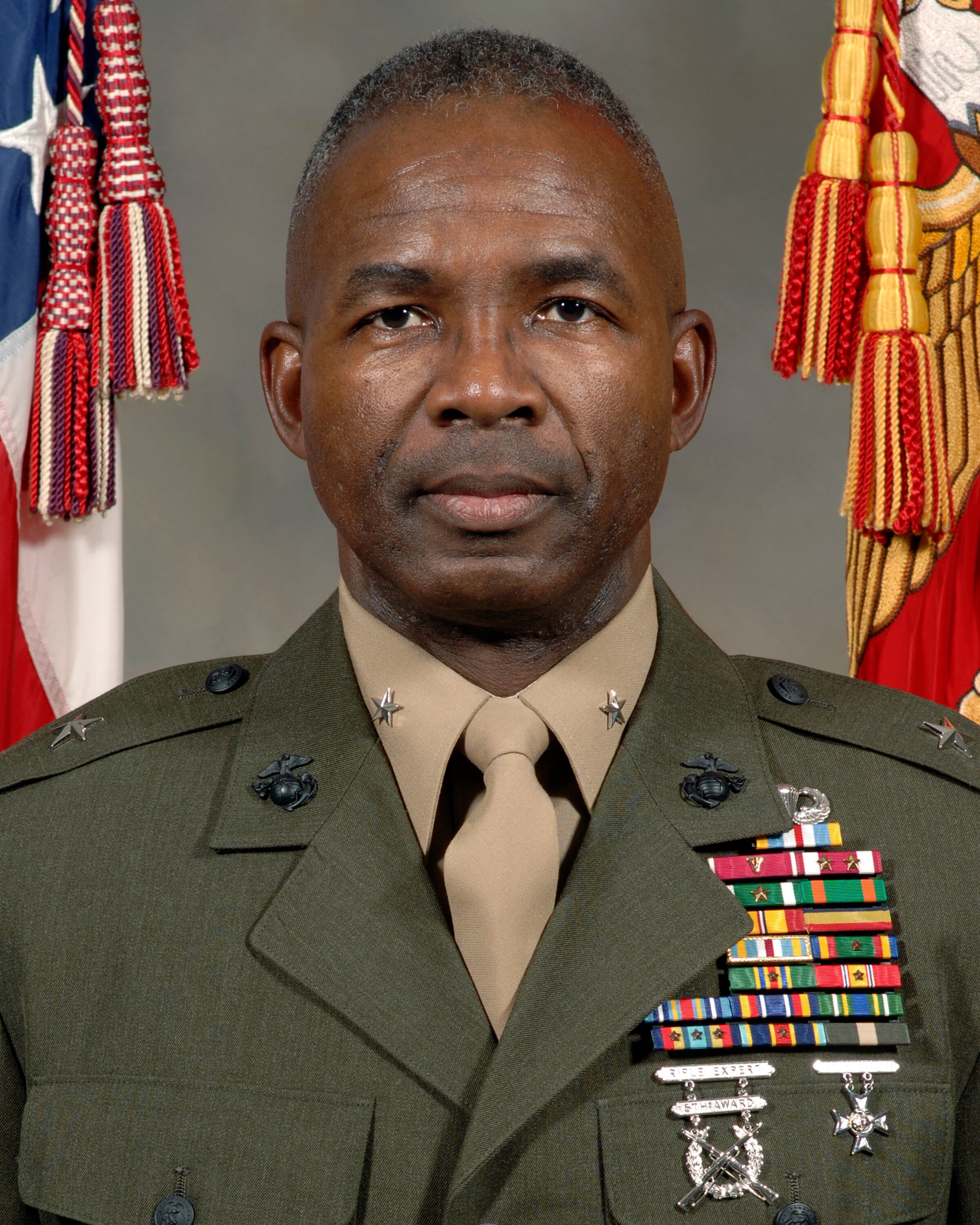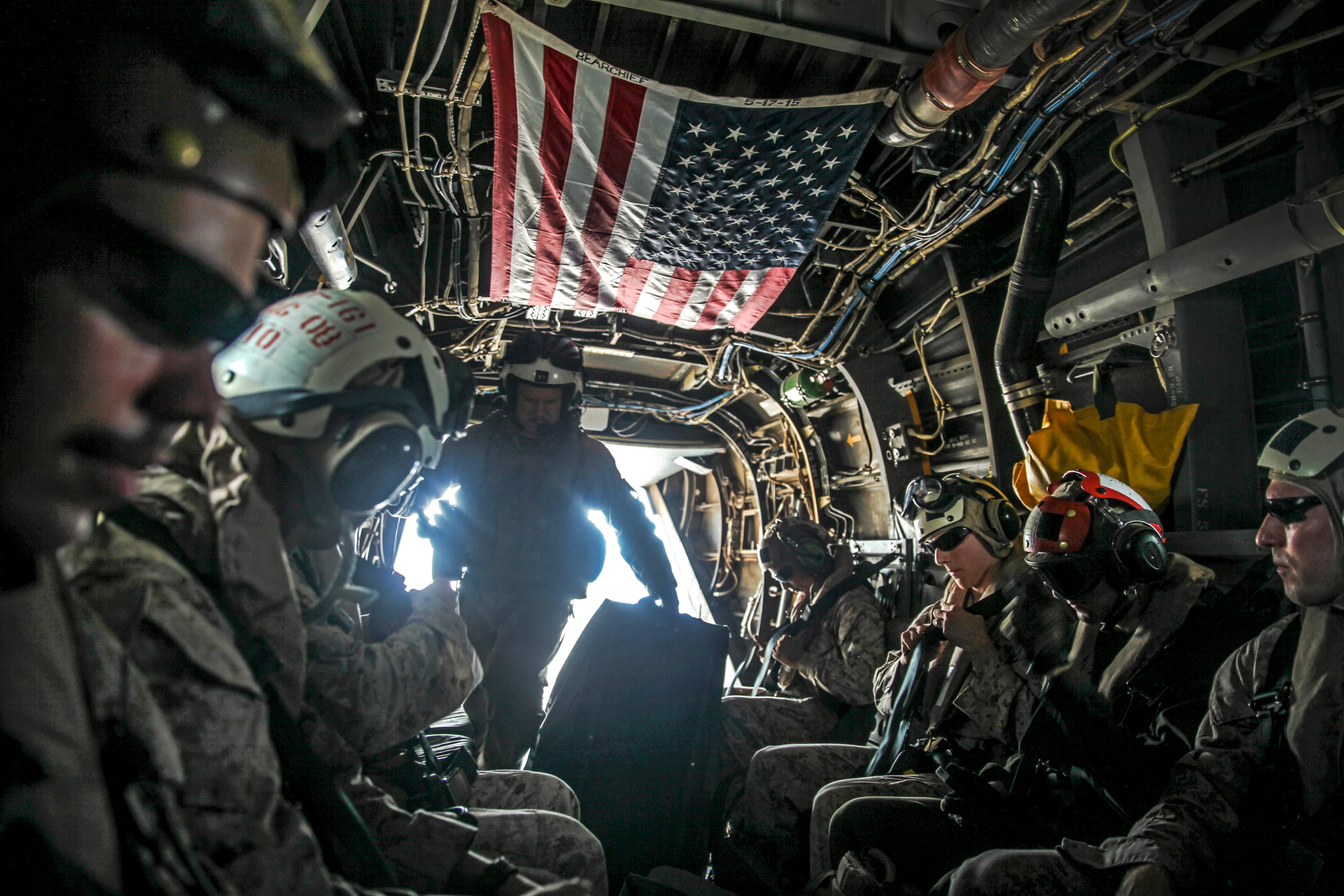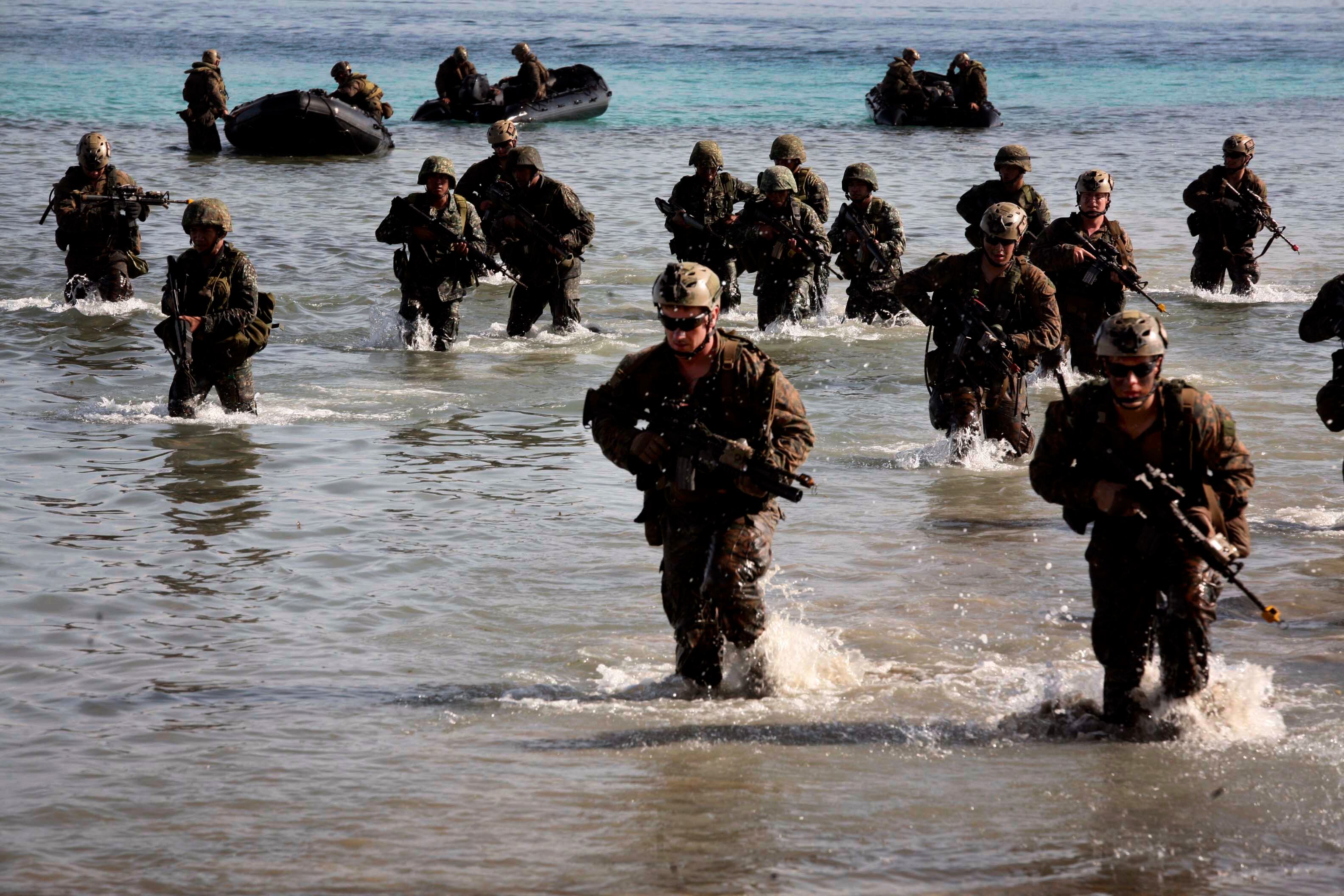As the Marine Corps' top operations officer, Lt. Gen. Ronald Bailey is helping lead the service through a shift from large-scale combat operations to nimble crisis response missions.
Bailey, the deputy commandant of Plans, Policies and Operations, is the top Marine responsible for guiding deployment plans and force-structure policies. He also serves as the advocate for the service's ground combat element, acting as a liaison between Marines carrying out missions worldwide and the leaders planning them in the Pentagon.
Throughout his career, Bailey has served closely with Commandant Gen. Robert Neller, who recently replaced Gen. Joseph Dunford as the Corps' top general. The two were neighbors while serving in Japan, and would even cut each other's grass if the other was away.
Bailey said Neller is a determined leader, a great listener and a true innovator.
"He is the right man for the job," Bailey said. "He thinks outside the box. ... I tell you what – there would be no enemy that he is not ready to take on."
The two will work closely together as Marines carry out a variety of missions across the globe, from air strikes against the Islamic State group to partnership training missions in Europe and embassy security missions in hot spots.
Marine Corps Times sat down with Bailey at the Pentagon Oct. 8 to talk about his top priorities for operations in the year ahead and what Marines carrying them out can expect. Excerpts of that interview have been edited for clarity.
Q. What are some of PP&O's top priorities in the year ahead?
A. The commandant is coming in with some focus areas, and I am lasered into those areas. He talked about force structure, readiness, training, enabling integration and modernization of the force. That is the guide —everything that I am doing and focusing on will be in those areas.

Lt. Gen. Ronald Bailey says the Corps has studied gender integration of direct ground combat units and now it's time to let the defense secretary make his decision.
Photo Credit: Marine Corps
Q. Have your priorities shifted at all since Gen. Neller replaced Gen. Dunford as CMC?
A. Gen. Neller is going to take about 90 days to go around and visit the Corps. After that, he will put in a fragmentary order to Gen. Dunford's planning guidance. He is going to make some changes, rightfully so, based on his tour and the information he gathers and what he sees as focus areas for the Corps.
Keep in mind that Gen. Neller was recently Lt. Gen. Neller, and part of being a three-star is meeting here every quarter to talk about major issues the Marine Corps faces. So it's not like he's starting from ground zero.
Q. Having served closely with Neller throughout your career, what can Marines expect from their new commandant?
A. He gets motivated by Marines. It is almost like he wants to put on a football helmet and go butt heads with them. That is just how he is. It almost makes you want to run out and grab a pullup bar or something. If Gen. Neller is around, it's like, "Rah!"
He has the right Marine attitude, and it's real. If they needed a lefty, they got a lefty. If they needed a righty, they got a righty. He does whatever is asked and he'll be smiling while he does it.
Marines got a good commandant. He knows how to prepare people for the future. It will be a lot of fun.
Q. You're the advocate for the ground combat element. That's high on everyone's mind right now with the integration mandate deadline looming. What has been PP&O's role in all of that?
A. I take in information from the operating forces. Battalion and regimental commanders give their input to division commanders, and the division commanders come up here twice a year. I hear what they have to say and absorb the voice of the Marine Corps, and I take that into mind when making recommendations that I push to the commandant.
As far as the issue of gender integration, the Marine Corps had a very good study. That information was given to the commandant and he presented it to the defense secretary.
I think the best thing we can do is allow the SecDef space to make that decision. No matter what happens, we must carry out the mission as passed on to us no matter what.
Q. Is that your message to the GCE?
A. My message to the GCE is that we need to back up, give the SecDef time to make the decision. When he makes the decision, as Marines always have in the past, we salute and carry out orders. We are going to be fine. The Marine Corps is in great shape.
Q. Another thing PP&O has been closely involved in is the creation of the land-based special-purpose Marine air-ground task forces. There are now task forces for U.S. Africa, Central and Southern commands. Are Marines going to see more of this?
A. We had all of these hot spot threats out there, roughly 28 across several regions. In the past, we had Marine expeditionary units afloat nearby, but because of the shortage of naval ships, we had gaps. So we created these special-purpose MAGTFs to respond to that.
I think we are in a good place and will stay where we are at this point. We can leverage the MV-22B Osprey to get to places we normally could not go, so we are going to hold with what we have right now.
Q. SPMAGTFs and MEUs are operating across vast regions. SPMAGTFs are spread across several countries and MEUs have sometimes split to operate in different combatant commands. How has it shaped the planning process for future missions?
A. We have learned some valuable lessons in terms of how we prepare to deploy MEUs. Our new operating environment requires us to disaggregate, or split up, to go to different areas to respond to all the various challenges. At the same time, we have to be able to come back together to display or respond to crises.
The lessons learned or feedback from the commanders apply to our MEUs and SPMAGTFs: We need to train our forces in the ways in which we employ our forces. We are making sure we prepare the Marines for what we think they are going to encounter.
Q. As you deal with that amphibious ship shortage, there's been a lot of talk about putting Marines on more Navy ships. How is that moving forward?
A. What we are looking at is other ways to get Marines into theater, other ways in which we can deploy Marines on different Navy assets.
We are testing the Osprey on various different platforms. I think that is very good not only for the Navy and Marine Corps, but also for the nation. It shows our flexibility and ability to adapt. But I want to be clear that these alternative platforms are not substitutes or replacements for amphibious combat ships.
Q. Leaders have also talked about landing Ospreys aboard allies' ships. What capabilities does that give you as you plan for future contingencies?
A. We are certified to land the Osprey on ships from the United Kingdom, Spain, France and the Netherlands. That type of interoperability, is in my opinion, demonstrates a future capability that — when we are, in fact, in some sort of combined operation with some of our NATO allies — we have already done proof of concept landings on their ships.

Members of the 15th Marine Expeditionary Unit load gear onto an MV-22B Osprey before departing from the amphibious assault ship Essex for Kenya in support of President Barrack Obama's visit there. (U.S. Marine Corps photo by Cpl. Elize McKelvey/Released)
Photo Credit: Cpl. Elize McKelvey/Marine Corps
As we move forward with our allies, and partners, I think certification with the MV-22 is, in fact, something that we are going to pursue.
The most important thing we see here is that this interoperability gives us an opportunity to train together and also build partnerships capacity. Everybody now sees the Osprey completely differently. At one point, they might have been skeptical, but now they see the great capability. It is changing the battlefield. Around the world, people are gaining more trust with this.
Q. Marines' post-war operational tempo has remained high. They're taking on the Islamic State group, deploying with crisis response units, protecting embassies, and working with partner militaries in Europe, Africa and the Americas. Are there any communities in particular that you are concerned about not meeting the deployment-to-dwell time goals?
A. There are some challenges when it comes to fixed-wing assets like the KC-130J or Osprey squadrons. We are working on those. The commandant is coming up with a model to recapture readiness.
The thing about op tempo is that the enemy has a vote. Requirements are constantly changing. Last year, we were dealing with Ebola. Now we're dealing with Russian aggression, Syria, the Islamic State group — I can keep going down the list — and that is creating higher op tempo. We see that, we are aware of it, and we are addressing it as we move forward.

Philippine and U.S. Marines simulate a beach landing Oct. 2 during PHIBLEX 2015. Bailey says he doesn't lie awake at night; he knows III MEF Marines have the watch.
Photo Credit: Sgt. Anthony Kirby/Marine Corps
Q. As the officer leading the planning for future contingencies or enemies Marines will face, what keeps you up at night?
A. I do not stay up and worry, and here is why: When I am asleep, III Marine Expeditionary Force is on the scene. When I am awake, it's I and II MEF. We always have Marines on the job 24/7.
When you are sleeping, there are Marines awake around the world. I don't worry because I know there is a Marine on post ready to do business, ready to respond no matter what time of day it is. I know the Marines are going to answer the call and do what we need them to do no matter what. Rest easy.




